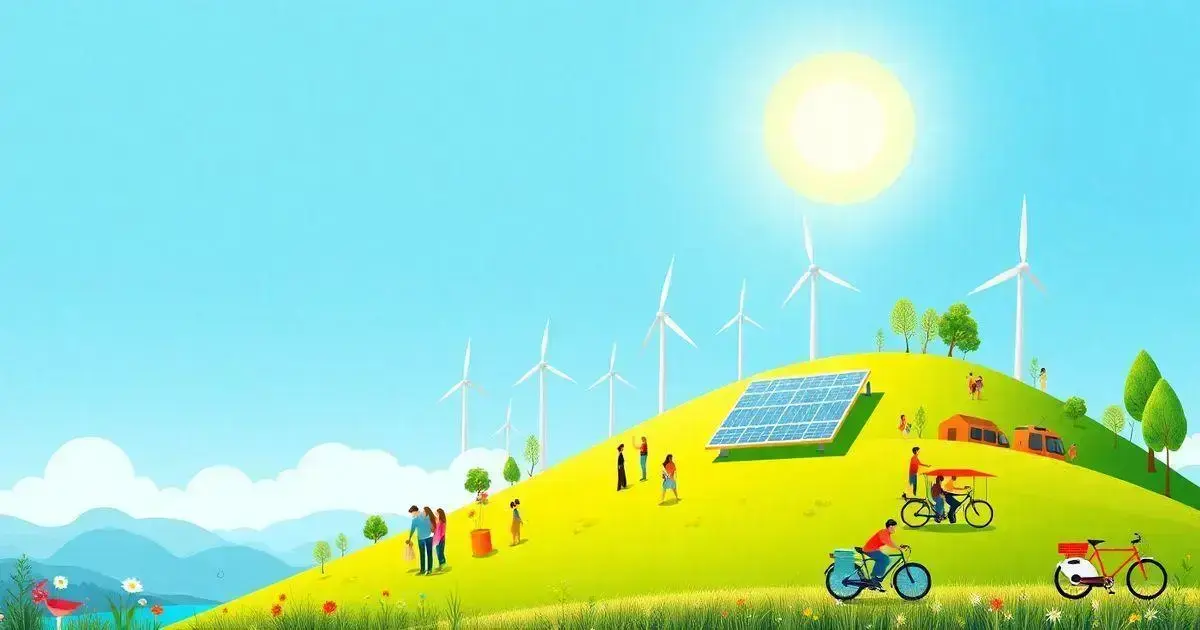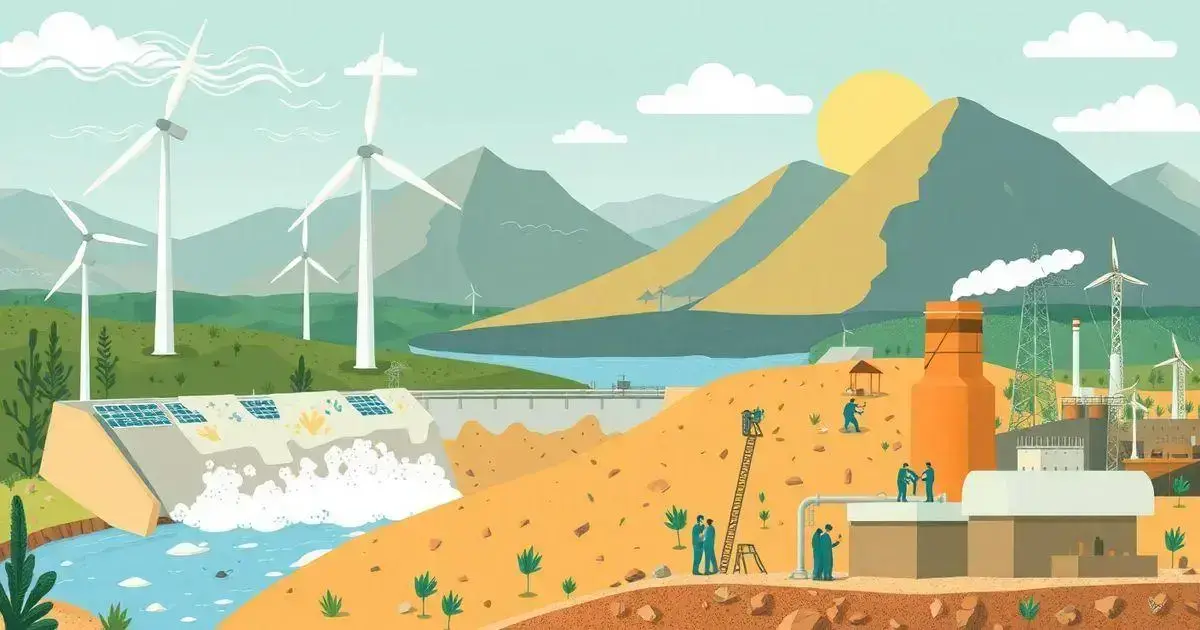Renewable energy technologies are leading the charge in our journey toward a more sustainable world. As we face growing concerns about climate change and the depletion of fossil fuels, these innovations provide a promising alternative.
From solar power to wind energy, renewable technologies are transforming how we generate and consume energy. They not only reduce our carbon footprint but also offer long-term solutions that contribute to environmental preservation.
Explore the powerful impact of renewable energy technologies and how they’re reshaping the energy landscape for a cleaner, greener tomorrow.
What are Renewable Energy Technologies?
Renewable energy technologies refer to methods and systems that harness energy from natural sources that are inexhaustible. Solar panels capture sunlight and convert it into electricity, while wind turbines utilize wind to generate power.
Hydropower, based on water flow, is another well-known renewable technology. Geothermal energy taps into the Earth’s internal heat, and biomass involves using organic materials for energy production. These technologies are vital in reducing our reliance on fossil fuels and maintaining a cleaner environment.
The Benefits of Renewable Energy Technologies

The benefits of renewable energy technologies are numerous and significant. First, they greatly reduce greenhouse gas emissions, helping combat climate change. By choosing renewable sources like solar, wind, and hydro, we lower our carbon footprint and protect the environment.
Second, these technologies provide energy security by diversifying our energy supply. This reduces dependence on imported fuels and enhances local economies.
Additionally, investing in renewable energy creates jobs in manufacturing, installation, and maintenance, fostering community growth.
Finally, renewable technologies often lead to lower energy bills over time, as the cost of solar and wind energy continues to decrease.
In conclusion, renewable energy technologies not only benefit the planet but also promote economic growth and energy independence.
Types of Renewable Energy Technologies
Renewable energy technologies are diverse, offering solutions to meet various energy needs. Solar energy, for instance, uses photovoltaic cells to convert sunlight directly into electricity. Similarly, wind energy is harnessed through turbines that capture wind flow to generate power, providing efficient and renewable sources of energy.
Hydropower relies on the movement of water, often through dams, to produce energy, making it a reliable and consistent option. Geothermal energy, on the other hand, taps into heat from beneath the Earth’s surface, serving as a source for both electricity and heating. Biomass energy utilizes organic materials like plants and waste to generate electricity or heat, contributing to energy sustainability.
These innovative technologies not only deliver clean energy solutions but also play a crucial role in reducing dependence on fossil fuels, paving the way for a greener and more sustainable future.
How to Implement Renewable Energy Technologies

Implementing renewable energy technologies involves several key steps. First, it is essential to conduct an energy audit to assess current energy use and identify areas for improvement. This helps in determining the right technologies to adopt.
Next, consider financing options available for renewable projects, as many governments and organizations offer incentives and grants.
After securing funding, engage with qualified professionals to design and install the renewable systems, ensuring all relevant regulations and standards are met.
Finally, educate users on how to operate and maintain these systems effectively, contributing to long-term sustainability and efficiency.
Future Trends in Renewable Energy Technologies
Future trends in renewable energy technologies are revolutionizing energy production. A prominent development is the advancement of energy storage systems, such as high-capacity batteries that store surplus energy from renewable sources, enhancing both efficiency and reliability. Smart grid technology is another critical innovation, utilizing real-time data to optimize energy distribution and management.
Improvements in solar panel efficiency and wind turbine design are significantly lowering costs while boosting energy output. Bioenergy, derived from agricultural waste, is also emerging as a viable and sustainable energy source. Moreover, the integration of artificial intelligence in energy management systems promises to optimize consumption patterns and minimize energy waste.
Challenges Faced by Renewable Energy Technologies

Intermittency: One of the significant challenges in the adoption of renewable energy technologies is the issue of intermittency. Solar and wind power are dependent on weather conditions, making power generation unpredictable. For instance, solar panels produce electricity only during the day, while wind turbines require a steady breeze to operate efficiently.
This variability can cause difficulties in maintaining a consistent energy supply, particularly during peak demand periods. To address this, storage solutions such as batteries are essential to ensure that renewable energy technologies can provide a stable and reliable energy output.
Initial Costs: The high initial costs associated with implementing renewable energy technologies pose a barrier to widespread adoption. The installation of solar panels, wind turbines, and supporting infrastructure requires substantial upfront investment.
While these costs tend to decrease over time as technology advances and economies of scale improve, they can still discourage businesses and individuals from transitioning to cleaner energy sources. Governments and organizations often provide incentives or subsidies to promote the adoption of renewable energy technologies, making them more accessible and affordable.
Requirement for Space: Renewable energy technologies, such as solar farms and wind turbines, require considerable space for optimal performance. Solar farms need large areas to maximize sunlight exposure, and wind turbines must be spaced out to avoid interference between units.
In densely populated areas, finding suitable land for these projects can be challenging. Additionally, land use conflicts may arise if renewable energy technologies compete with agricultural or residential purposes. Innovative solutions, like rooftop solar panels and offshore wind farms, can help mitigate space limitations and promote sustainable energy generation.
Lack of Infrastructure: The existing power grid infrastructure in many regions is not designed to handle the decentralized nature of renewable energy technologies. Traditional power grids are built around centralized power plants, whereas renewable energy sources often generate power in remote locations.
Upgrading power grids to accommodate distributed energy generation is essential to ensure the efficient transmission and distribution of electricity. Without adequate infrastructure, the full potential of renewable energy technologies cannot be realized, limiting their contribution to the overall energy mix.
Public Perception: Public perception plays a crucial role in the adoption of renewable energy technologies. Misunderstandings about their benefits, efficiency, and environmental impact can hinder acceptance. Some people believe that renewable energy technologies are unreliable or costly, despite evidence showing their long-term economic and environmental advantages.
Education and awareness campaigns are vital to changing public perceptions and fostering greater support for renewable energy technologies. By addressing misconceptions, communities can become more engaged in the transition to sustainable energy solutions.
Embracing Renewable Energy: A Path to a Sustainable and Prosperous Future
The integration of renewable energy technologies offers a path towards a sustainable future. By harnessing natural resources, we can reduce greenhouse gas emissions and achieve energy independence.
Each type of renewable energy has its unique advantages, and by combining these technologies, we can maximize efficiency and reliability.
Despite the challenges we face, such as high initial costs and infrastructure limitations, the benefits far outweigh the downsides. With continuous innovation and support from governments and communities, we can overcome these obstacles and build a cleaner, greener planet for future generations.
Ultimately, adopting renewable energy technologies not only addresses current energy needs but also helps in securing a healthier environment and promoting economic growth.
